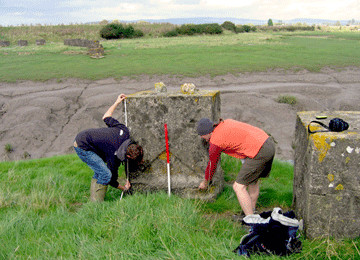The Glamorgan-Gwent Archaeological Trust Ltd.
GGAT
About Us
Undergraduate Students Work Experience
Samuel Trefgarne, Newcastle University (year 3)
Having no experience of Archaeological Planning and Legislation I came to GGAT not knowing what to expect. I was immediately thrown in at the deep end, looking through records and historical maps, discovering how sites of historical interest may be damaged through proposed building work. In some cases I was asked my opinion concerning proposed planning conditions, gaining me an instant insight into the legislative side that precedes most of the archaeology carried out in Britain-it was eye opening to say the least.
It was also excellent experience to get a behind-the-scenes look at the towns and villages that I had lived around throughout my life. Discovering small details about the town where I went to school that had been discovered on archaeological excavation was brilliant. The GGAT staff were always on hand to help, and they had a wealth of experience as some had worked on the original excavations that took place.

Working at GGAT showed me the hard work that is required preceding and following a planning decision. Any information that is found is then logged and kept on record for many decades. This showed me what an art it was to make the right decision for the right site, and what happens when it doesn't exactly go to plan and something unexpected turns up and the large and far reaching consequences that this has.
Although I spent most of my time in the office I did get a chance to go out and see some of the other types of work that GGAT do. Firstly liaising with the public when disputes arise and making sure that no rules are broken. We went to a heated local meeting where many differing opinions were aired-it was very exciting.
My favourite day at GGAT was when Paul Huckfield (GGAT Outreach Oficer), Jonathan Berry (Cadw) and I went to the Gwent Levels to see some of the Second World War coastal defences there. It showed the genuine worry that must have been present in the 1940's when German invasion loomed. We surveyed the extensive structures put in place to guard Britain's large and vulnerable coastline. Some of these sites may only appear as rough concrete blocks but they are, however, extremely important to our heritage. The coastal environment in which they exist is highly dynamic and if not protected now through scheduling and other mechanisms we could lose this part of our history forever. I like to think of these as monuments to our heritage, even though they are little over seventy years old. It sowed the seed in my mind for a possible dissertation topic. Many Thanks.
Read other testimonials here
- Cadi, Pontarddulais Comprehensive School, Swansea. Yr 10
- Cordelia, Dwr-y-Felin Comprehensive School, Neath. Yr 10
- Sarah Everhart, American Exchange student, Swansea University, Swansea. Yr 3
- Heidi Richards, American Exchange student, Swansea University, Swansea
- April, Dwr-y-Felin Comprehensive School, Neath. Yr 10
- Nephi, Morriston Comprehensive School, Swansea. Yr 10

